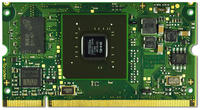As a pleasant surprise, there's quite a bit of activity and emerging excitement in the area of synthesis, just in time for this year's DAC.
Physical Synthesis
Oasys Design Systems has come out of stealth mode with rather incredible performance claims.
It's exciting to hope for a revolution in synthesis. Put me in the "show-me" camp. It's (relatively) easy to meet 80% of what Design Compiler can do, but there are many features and tricks developed by DC over the years, making it a hard tool to displace. Synopsys has certainly seen strong competition, including from Ambit BuildGates (acquired by Cadence) and most recently by Get2Chip (now Cadence RTL Compiler). What often happens is not that king DC is overthrown, but that the competition lights a fire under Synopsys and their tools will improve at a much faster pace than market dominance would dictate.
What's interesting about Oasys are the tremendous claims about capacity and run time, and the emphasis on physical synthesis, combining logic synthesis with placement and optimization. The company also has impressive board members, including Sanjiv Kaul (former implementation GM at Synopsys) and, re-appearing to EDA after a long hiatus, Joe Costello (charismatic and successful former Cadence CEO).
ESL Synthesis
For several years, EDA industry analyst Gary Smith has been calling for the ascent of ESL (Electronic System Level) design. He was already called an ESL evangelist back in 2006! It's been the next big thing for a while now. It seems to follow the industry's progression from transistors to gates to RTL, but RTL remains the mainstream design method.
In the context of design implementation, ESL implies synthesis at a more abstract level than RTL. This year, there appears to be considerably more buzz, and not just from Gary. See, for example, recent posts by John Cooley and Richard Goering.
Key players include
My apologies for any I've overlooked--I'm learning about this field. One point of concern is that there isn't a consensus on design language/dialect, which varies by vendor over C, C++, SystemC, and proprietary languages/extensions. That can impede adoption. It was Design Compiler that established the de facto standard for Verilog RTL synthesis subset, and this provided a common point for customers (and competitors) to converge on.
It's nice to see continued innovation in this critical area of IC design, and merits further investigation.







 Find the answer in
Find the answer in 